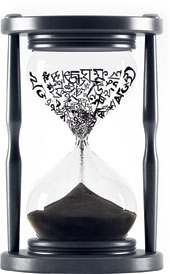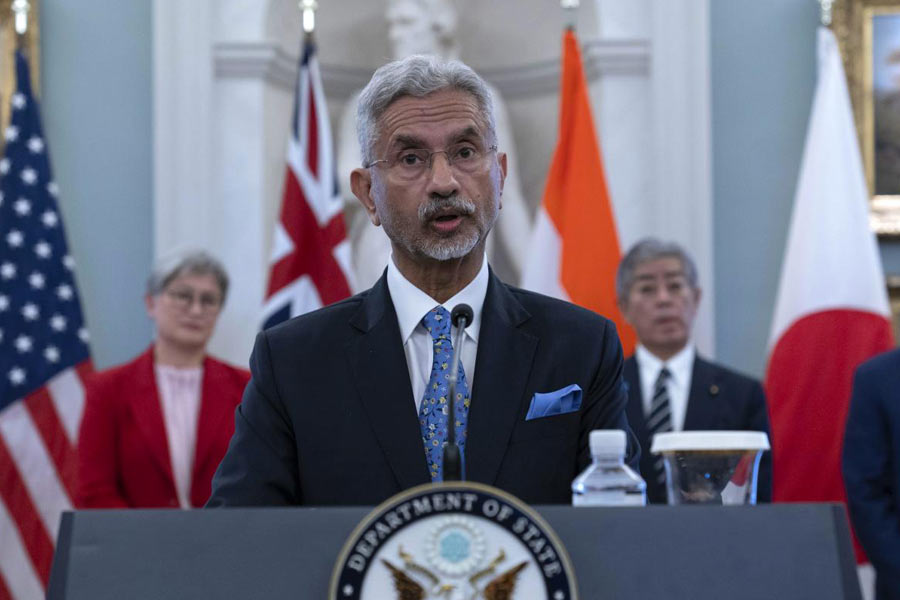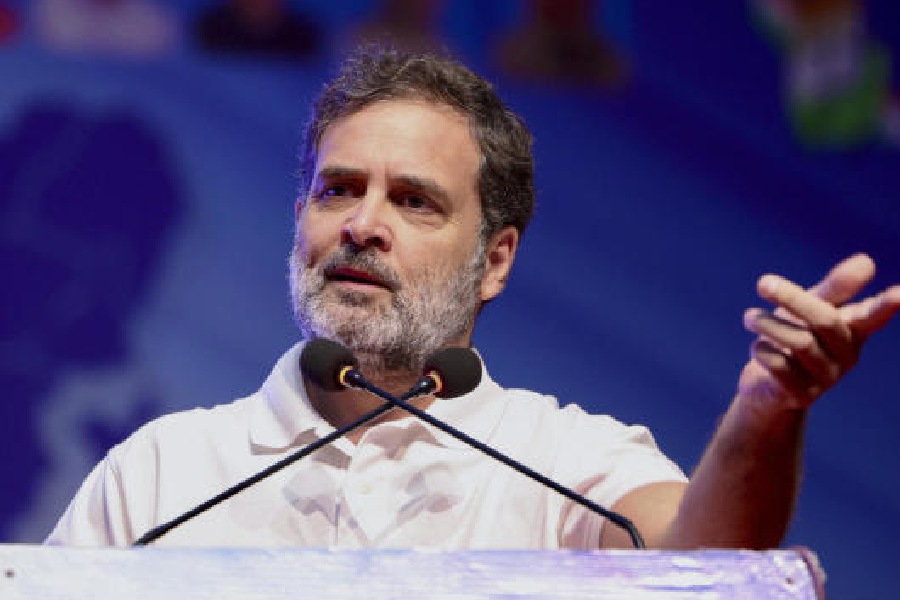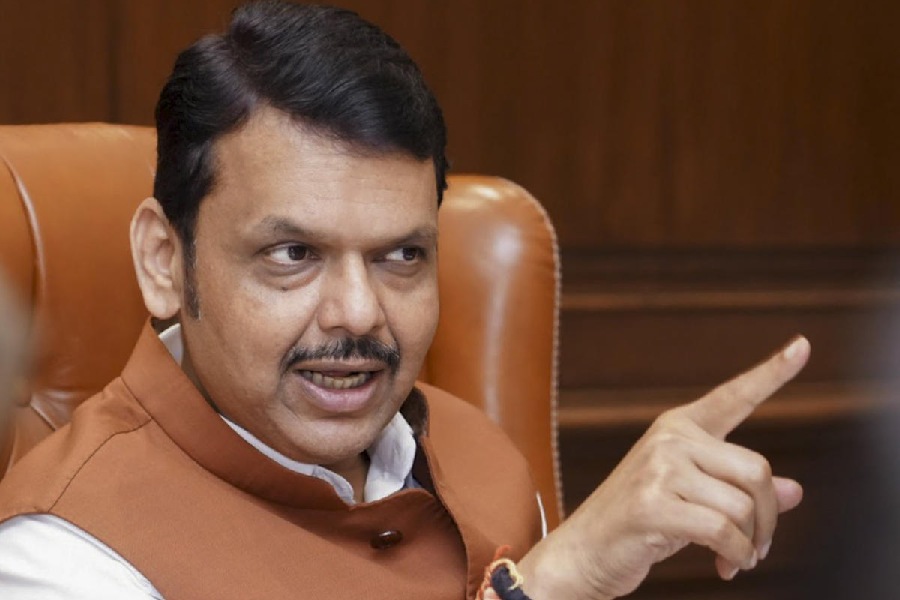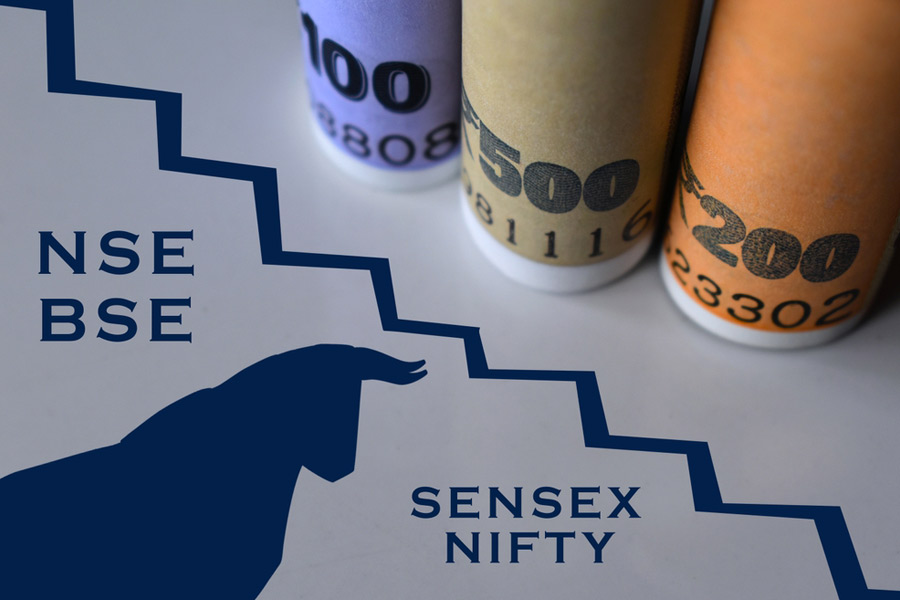
A few months ago a student of the primary section of a reputed English medium school in Calcutta got an "E" in her Bengali test. An "E"? In a Bengali language test in Calcutta?
The test was on synonyms. The first word was " roshmi", meaning ray. The child had written "Shib", as in the Hindu deity Shiv, spelling the name wrong in Bengali. Of the other answers, the last one was exceptional. The word given was "bilombo", meaning delay, and the synonym she had come up with was " hoshmi".
This was brilliant, the mother thought. The little one had invented a word instead of giving up. " Hoshmi" became an in-joke, a beautiful pretend-word, suggesting an illusion of meaning, without meaning anything, and therefore very funny. And the matter would have remained funny, had it not also said something about what is happening to Bengali today.
Much of Bengali today is also like the nonce-word, " hoshmi": the substance is gone, what remains is only skin. Some suspect the language may be dead already. For some, this could be true of Bengali culture as well.
The evidence is striking. The language has gone missing from the lives of many educated urban Bengalis. The inventor of " hoshmi" can spend an entire day without uttering a single word in Bengali. At school and at home, she speaks English. Her parents speak English. Their friends speak English. Their colleagues speak English. The waiter speaks English. The girl behind the counter at the department store speaks English. Or else, Hindi.
At the multiplex queue, you address the man ahead of you, who is evidently Bengali, in English. In the app cab, you converse with the driver, who is Bengali but speaking in English, in English for fear that he may consider Bengali a snub.
Class is inextricable from language, but what is the name of the feeling when you know that the other person is Bengali but are forced to speak to him in English? Hoshmi?
The urban Bengali feels it is not necessary to 'learn' Bengali as you can 'acquire' it from the environment," says linguist and educationist Pabitra Sarkar. Bengali now has developed not only a new semantic, but also a new syntactical structure.
But the city is everywhere. In a Bengali serial, a woman says, " Amake pochhondo na", adopting a Hindi phrase, and ends up meaning "I am not liked", when she wants to say -"I don't like it".
A member of Tritiya Parisar, a platform of young enthusiasts who want to work in Bengali, sees a conspiracy here. "Such language is deliberate. If Bengali is not spoken this way, it is not considered to be urban enough," says a Parisar member who is a teacher of Bengali at a college in Hooghly.
When words are borrowed, they enrich a language. Bengali was always a hybrid language. There were numerous Farsi words in it before the British arrived. But when both letter and grammar, not to mention the spirit, fall away, what remains?
Ms Hoshmi is not alone in not having read Bengali literature. The teacher from Hooghly says he has often come across Bengali Honours students who are not familiar with Tagore's Gitabitan, his collection of songs that the educated Bengali was brought up on once.
Not in touch with their language, Bengalis sport a certain compensatory behaviour called "Bangaliyana". This does not require them to speak Bengali, but to observe a few Bengali "lifestyle" practices.
The Bangaliyana market compels a Bengali to observe all Bengali festivals, wear a sari or a dhuti, eat Bengali food, preferably at a good Bengali restaurant. The Bengali thali is Bangaliyana. A soft, sentimental rendition of Rabindrasangeet is Bangaliyana. Wearing a white sari with a red border on Bijoya Dashami and looking like the woman in a jewellery ad is Bangaliyana. But instead of visiting family and friends with Bijoya greetings, you can WhatsApp GIFs.
In the meantime, Ms Hoshmi wanted to howl at the full moon on Lakshmi Puja night, because she had temporarily turned into "Wolfina" (another one of her inventions), even as her Bengali neighbour was preparing to observe Karwa Chauth. Was the Bengali created entirely by the English? Pabitra Sarkar agrees, looking disturbed.
Not that the Bengali's inferiority complex is anything new, reminds Sarkar. In Ekei Ki Bole Sabhayata (So, Would This Be Called Civilisation?) written by Michael Madhusudan Dutta in 1859, Sarkar points out, one Bengali youth calls another a "liar". The accused is outraged, not so much because of the moral condemnation, but because he has been called a "liar" in English and not "mithyabadi" in Bengali. Delivered in English, abuse gains an edge.
"Languages are organised hierarchically in any society and the language that enjoys power - political, economic - dominates," says Sarkar. He adds that the "educated Bengali", from the beginning of colonial times, was reared on English. According to census figures, the literacy rate in India was 5.9 per cent in 1901; it rose to 17 per cent in 1947. "Bankimchandra realised this. In Bangadarshan he claimed that the educated Bengali did not understand the uneducated Bengali."
Bengali's drastic decline began in the Eighties, coinciding ironically with the Left government's decision to remove English from the primary section of government schools, most of which were Bengali medium.
Sarkar, who was vice-chancellor of Rabindra Bharati University and served on several language committees of the Left government, says the move was intended at strengthening Bengali, not removing English. Most agree that the general breakdown of the government school education system caused by the politicisation of the process of appointing schoolteachers, rather than any single move, was responsible for the decline of Bengali as a medium.
By the time English was back in government schools in 2001, the damage had been done. The private English medium school was everywhere. Bengali as a medium of instruction had been almost done away with in private schools. Globalisation, technology and social media drove the last few nails in the coffin.
Meanwhile, Ms Hoshmi breaks down when confronted with the complexities of yuktakshar, prabad prabachan and long passages of poetry in Bengali, and can only be placated with the promise of a pizza dinner. "Another problem with the teaching of Bengali is that it is made difficult," says Sarkar. "Language should flow, be easy. Many Bengali teachers will insist that a good essay should be written in the ornate style invented by publishers of Bengali essay books."
Are Bengalis overreacting to bad news about their language? Swapan Chakravorty, Distinguished Professor in the Humanities, Presidency University, feels that too much fuss is being made. Bankimchandra and Haraprasad Shastri had complained in the 19th century that the "pure" Bengali of Kashiram Das and Krittibas Ojha, who rendered the Ramayana and Mahabharata into Bengali, was diluted when it was sought to be "purified". That was the handiwork of the Company civilians at the Fort William College and the Baptist missionaries of Serampore. But Bengali was already a hybridised idiom, and pre-modern poets such as Bharatchandra did not seem to mind. "Besides, we have to understand that not all school-going children in the state are Bengali speaking," he says. He refers to "linguistically displaced children", a concern raised with policymakers in Delhi by linguist Probal Dasgupta.
An education department official echoes Chakravorty. "In the last three decades or so, only about 40 government Bengali medium schools have closed down," he says, "but numerous schools have been merged because of low attendance". Many of these closures and mergers in the city have happened in north Calcutta, where Hindi speakers dominate. Many Bengali parents also select Hindi as second language for their children.
That said, Chakravorty stresses, when Bengali has to be studied, its dignity has to be ensured. "First, you have to throw all dilapidated textbooks for young learners into the Bay of Bengal," he says. Badly written textbooks, which make the subject more difficult than it is, inhibit the child.
"Second, for those who are studying Bengali as a second language, failing in the subject should matter. If you fail in Bengali you should be placed in the third division. Like Maths, language is a cornerstone of learning." For proper development of the mind, three languages are ideal, but at least two are a must.
Moromi Roy, who teaches Bengali at St. James' School, feels that notion of the death of Bengali is vastly exaggerated. "It is true that children are reading less of Bengali, but we have to accept that much of their entertainment comes from electronic gadgets. The child's world has changed. They read in their own way."
But Ruby Mukhopadhyay, who taught at the Institute of Education for Women in Alipore in south Calcutta and was in charge of the Nursery Training Section, is not convinced. She feels Bengali is greatly devalued today, as it is not given equal "weightage" as English. "We have to treat it like a foreign language in the classroom."
Sarkar says Bangladesh, with its vigorous Bengali culture and contemporary literature, holds out more hope. "But there, too, it is not uncommon to prefix a sentence in Bengali with 'so' and follow it up with 'but'," he adds. He says he may speak to Bengali writers on the need for good contemporary literature for children.
Till then we have " hoshmi".

